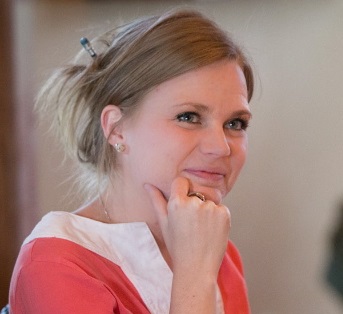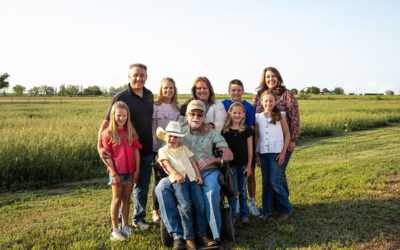
Maternal instincts, predictable cattle
 Some may take offense to comparing a herd of kids to fresh calves or a mom’s eye to maternal instincts, but I don’t think it’s out of line to say ‘fetal programming’ had a role in how each Loseke kid is developing a passion for the beef business.
Some may take offense to comparing a herd of kids to fresh calves or a mom’s eye to maternal instincts, but I don’t think it’s out of line to say ‘fetal programming’ had a role in how each Loseke kid is developing a passion for the beef business.
All four were riding feedlot pens in utero; June jokes they came out of the womb ready to get to work. They cut their first teeth on steak and one even celebrated a young birthday with a steak-shaped, strawberry red cake. Family vacations involve road trips down far-away ranch roads and photos of all six standing in mountain pastures.
From her kitchen table, June recounts the vacations to me, and in the same breath, recalls the cattle that made the journey from those Montana ranches to their feedyard near Columbus, Neb., that year. She and Ryan discuss the pen they were in, the market prices they got, how they fed, any health issues they had and how quickly June caught it.

“I think it’s the maternal side of her,” Ryan laughs. “She just knows. I honestly think she can identify a calf the day before it’s sick.”
“It’s just like being a student of your kids. You can’t discipline all four of these kids the same. You have to know them each individually,” June says. “It’s not just a black steer or another animal in another bunk line.”
Looking at Christmas cards on their farm refrigerator, we get back to following the calves I came to ask about: pen No. 4, full of Bruce Keaster’s heaviest steer calves and the first of three shipments from the Belt, Mont., family we introduced earlier this year. The March-born calves that weighed 675 on arrival in late October now lack only about 100 pounds of Ryan’s target finish of 1,400 pounds at 14 months of age.

At 147 days on feed, this pen experienced zero death loss, and less than 10% of the entire nearly 500 head were treated for health issues since their arrival.
“Bruce has done a good job of setting them up to perform well when they get here from a health standpoint and from a genetic standpoint,” Ryan says. “It’s more about management than anything you can find in a bottle.”
Now, they’re talking marketing and Ryan’s watching the Choice-Select spread to decide if he’ll sell on a grid. That day, there was an $8.03 premium for cattle that grade Choice over Select, just below the threshold he likes to see to balance the potential for marbling premiums with potential for yield grade discounts.
“It’s iffy. But having their consistency gives me the confidence to know we could grid them when the market’s right,” Ryan says.
Either way, their 20-year history gives the feeders confidence.
“When we get paid by the pound, Bruce’s steers just plain hang a heavier carcass. They’re not just deep in their rib, they’re wide across the front. If we put a saddle on those cattle, the cinch would have to be extra-long,” June smiles.

She pulls a cinch tight on Flash, the horse Bruce sent back to Nebraska on a cattle truck one year. He’s one of Ryan’s favorites.
“At his height, it’s hard to find a horse where Ryan’s feet aren’t dragging the ground from the saddle,” June says.
Of course, Bruce knows that – it’s just another way they take care of each other, along with predictable cattle, transparent management and an understood fairness that they’re both in this for the long haul.
“We sleep better knowing that’s the relationship with them, and I think they do, too,” June says.
Until next time,
Laura

PS – To catch up on our first installments about these calves, er, now steers from Montana, visit our previous ‘Following the Calves’ posts: Keaster family checks in, Friends and neighbors 1,000 miles away, and The Golden Rule in the Golden Triangle.
Travel to ranches in Oklahoma and South Dakota, too!
You may also like
Nebraska Ranch Receives Certified Angus Beef Commercial Award
Troy Anderson, managing a Nebraska ranch, focuses on breeding thriving maternal cows that will grade premium Choice and Prime, while respecting livestock, people and land. Anderson Cattle receives the 2023 CAB Commitment to Excellence Award. Their journey includes improving genetics, feeding home-raised and purchased calves and using data for better breeding decisions, all with a bottom-line approach.
Magnum Feedyard Earns Certified Angus Beef Award
While Magnum hasn’t always had pens filled with Angus-influenced cattle, they’ve invested in infrastructure, improved quality-based marketing and sought better genetics. Their dedication to detail and employee appreciation drive their success to high-quality beef production.
Showing Up, Every Day
Thirty-five thousand cattle may fill these pens, but it’s the Gabel family who set the tone for each day. Steve and Audrey persistently create a people-first culture, echoed by their son Case and daughter Christie, who work alongside them in the yard office. The Gabel’s drive to effectively hit the high-quality beef target earned Magnum Feedyard the CAB 2023 Feedyard Commitment to Excellence award.



